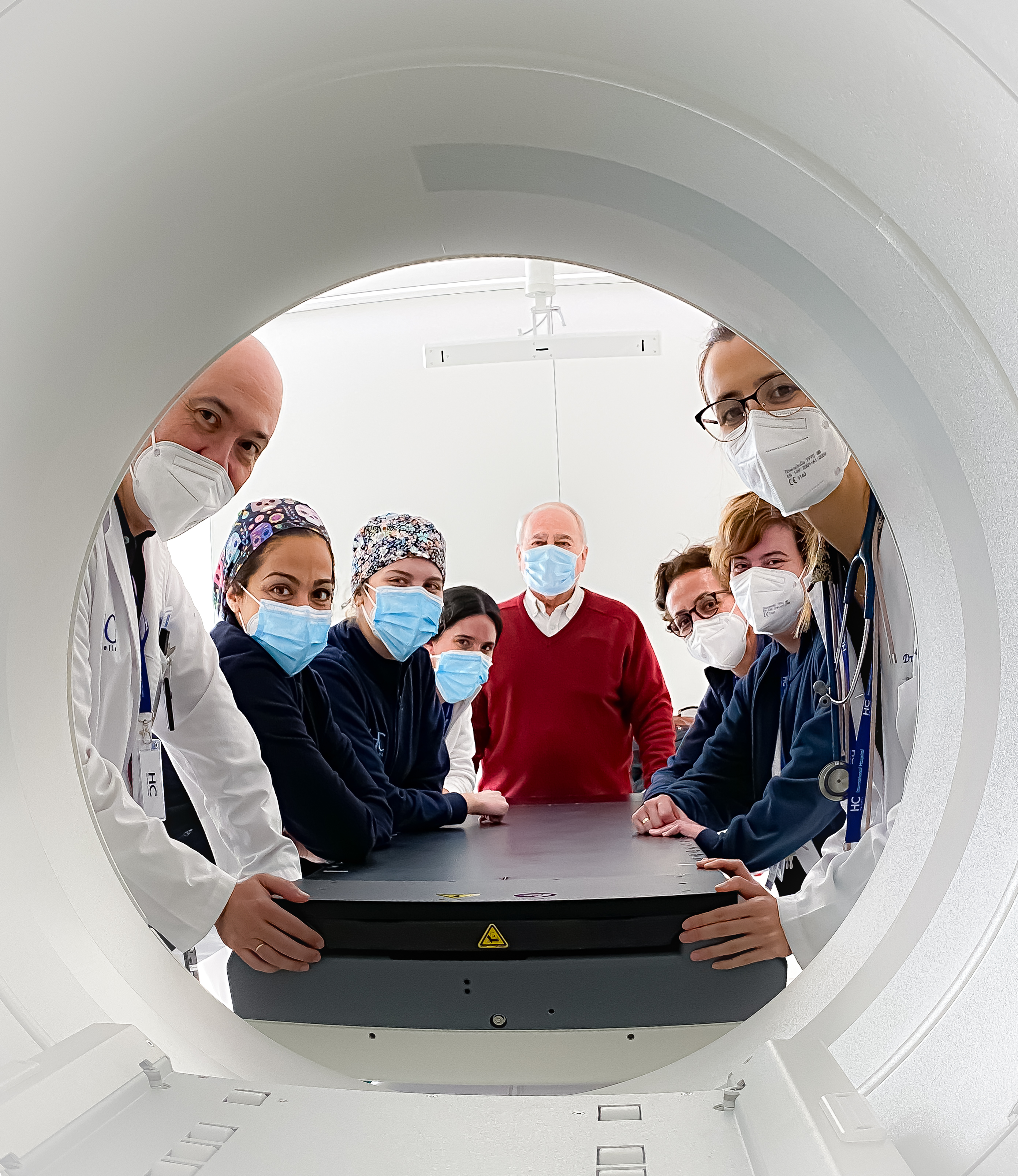 The first radiotherapy machine in Marbella has become operational. Gone are the distances between hospital centres and the waiting times that, until now, have reduced the quality of life of people with cancer in the municipality and surrounding area.
The first radiotherapy machine in Marbella has become operational. Gone are the distances between hospital centres and the waiting times that, until now, have reduced the quality of life of people with cancer in the municipality and surrounding area.
HC Marbella Oncology Centre has started to treat its first patients with a tomotherapy accelerator, incorporating all the latest technological advances in one machine: IGRT (image-guided radiotherapy), IMRT (intensity-moderated radiotherapy), adaptive capacity and the Synchrony tracking system which tracks the tumour in real time, increasing the accuracy of each session.
This state-of-the-art technology, unique in Spain and only the second in Europe, will enable treatment of around 350 oncology patients annually on the Costa del Sol.
Radiotherapy, together with medical oncology and surgery, is a fundamental pillar in oncology. According to the Spanish Society of Radiation Oncology – SEOR (Sociedad Española de Oncología Radioterápica), of the 276,239 new cases of cancer forecast to be diagnosed in Spain in 2021, 60% will require this treatment and 40% will be cured with radiotherapy alone or in combination with other treatments such as surgery or chemotherapy.
Now HC Cancer Center will be able to offer comprehensive, multidisciplinary, individualised care under one roof, including surgical oncology and radiotherapy as well as targeted therapy and immunotherapy. “The full therapeutic arsenal brought together in the same place, so that we can achieve the best results for our patients,” explains Dr Paula Sedano, radiation oncology specialist at HC Marbella.
Thanks to new diagnostic methods and cutting-edge cancer treatments such as radiotherapy, survival rates have doubled in the last 40 years.
The first patients
Targeted lung pleura treatment was amongst the first procedures to be performed in HC Marbella’s Radiotherapy Unit. C.H. is a patient with cancer who has been diagnosed with mesothelioma, causing pain. She is travelling from Malaga to be able to receive this new type of radiotherapy, which respects healthy soft tissue close to the tumour as much as possible.
“It is hoped that with radiotherapy we will be able to improve her pain and stabilise the areas treated”. It is a complex treatment, “It covers a large area due to the extent of the disease, in addition to this it is near to critical structures such as the spinal cord, the heart and the other lung”, adds the doctor.
Thanks to the dose conformity of this machine, “We try to target the radiation in those areas where there is a higher tumour burden and greater symptoms, respecting the dosage limits of surrounding healthy structures”.
In the clinical case of T.W., a patient with high-risk prostate cancer, the radical treatment of choice is radiotherapy. He no longer has to leave Marbella to undergo radiotherapy sessions.
In the prostate, it is essential to ensure that the bladder, rectum and adjacent organs receive the minimum amount of radiation. According to Dr Sedano, “Administering adaptive radiotherapy, with deformable fusion, we can ensure that the doses administered to the patient are those desired, allowing for possible changes in the patient’s anatomy or internal organs”.
In certain lung and prostate tumours, radiotherapy achieves comparable results to surgery, without being invasive. Shorter and more effective radiotherapy requires technology with sub-millimetre precision, difficult to obtain with conventional treatment. This translates to higher precision and versatility in fewer sessions, resulting in enhanced safety with a better quality of life for the patient.
February 8, 2021
Read other news
Tel.: +34 952 908 628
+34 609 148 799
952908898 Oncology
951829978 Diagnosis by imaging
951829947 Gynecology
952908897 Fertility
951829947 Physiotherapy